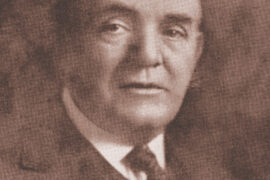By Matthew Debord
HQ 94 | SUMMER 2016
In the early days of the California wine boom in the 1970s, there was a fair amount of France-imitating going on. The most ambitious winemakers in the Golden State –especially the ones in the Napa Valley and in Sonoma – had in many cases been to France, or at least respected the reputation of French wines enough to imitate them.
As the 1970s turned into the 1980s, California vintners gained confidence and began to zero in on two grape varieties that did well under the western sun: Cabernet Sauvignon for reds and Chardonnay for whites.
The Cabs were big and rich and juicy – and so were the Chards. So much so that a backlash developed and California veered away from these grapes and the wines that they made, looking not to emulate the Bordeaux region of France, but rather the Burgundy region.
In Burgundy, the reds were made from Pinot Noir, and they possessed a delicate finesse to Cabernet’s bold bluster. The whites, also made from Chardonnay, weren’t large-and-in-charge but reserved and steely.
And wouldn’t you know it, Californians discovered that they could make gorgeous Pinots and more elegant Chards in the winemaking regions around Santa Barbara.
Europe took note. Maybe the Napa-Sonoma thing had looked like a fluke. But world-class Pinot Noir outside of Burgundy? Unbelievable.
By the 1990s and early 2000s, it was becoming clear that California could do anything the so-called “Old World” could, but with richer wines and more year-to-year consistency.
But there was one French region that hadn’t yet been replicated in California.
It was the Rhône, the region that surrounds the river of the same name, running south from Burgundy to the Mediterranean coast. This was a harsh, rugged, rustic part of France, and the wines matched the character of the land. They were rich, but husky, and they were made from the Syrah grape (the whites were obscure, hardly drunk outside the region). They really were the ultimate “wines of place.”
But then California got interested, mainly because similar wines were being produced in Australia, where they were called “Shiraz.” The Aussie wines weren’t firmly tannic and peppery like the Syrahs of the Rhône (which weren’t called “Syrahs,” by the way – they were called things like “Côtes du Rhône” and “Gigondas”). They were supple and fruity. And California thought it could do better.
California’s Rhône developed in the area around the town of Paso Robles, a quiet part of the state, on the Central Coast between Santa Barbara and the Monterey Peninsula.
Nobody thought the Californians could pull it off. But of course, they could. If the Almighty had ideas about creating the perfect winemaking region, it would end up being California.
The Syrahs of Paso – an unpretentious region of ranches and Old West-style inns – aren’t as herbal and thorny as their French counterparts. Rather, they are luscious and supple, but with a dark side, an edge. They taste a little bit wild.
One of my favorites is from Justin, and it sells for about $25. These wines can be difficult to find outside of California, but many are available online and at nice wine shops. You just have to ask and you’ll be directed to Syrahs that say “Paso Robles” on the label.
I also recommend visiting the region. It isn’t as popular as Napa and Sonoma, and it didn’t get a big boost in new tourists as Santa Barbara did when the movie Sideways came out. My wife and I are big fans of a small restaurant called Bell Street Farm, which is in the town of Los Alamos, just south of Santa Maria (where some of the best white wines in the region are made).
It’s the classic one-stoplight town, but it’s laid back and off the beaten path, and Bell Street does fantastic wine-country cuisine, especially roast chicken.
A word on the whites: Chardonnays from the Santa Maria region aren’t really Rhône substitutes, but they are Chards in a different style – more floral and austere than what you’d find in other parts of California. And if you want the more authentic effort at a Rhône white, then Santa Maria does amazing Viognier, which is the obscure white varietal I mentioned earlier. Again, they aren’t easy to find, but if you put “Viognier” and “Santa Maria” together on a label, you’ll locate some.
As for food, these wines are relatively versatile: grilled steaks, grilled sausages, lamb, chicken – anything outdoorsy and summery. But fish is tricky. The whites aren’t all that good of a match.
Your best bet is to stick with chicken and the richer fishes, like salmon. The basic idea is that these are really delicious simple wines that like to be around simple food.
Paso Robles is impressive. It’s one of California’s youngest regions in terms of fine winemaking, but also one of the state’s most ambitious. It’s come a long way in a short time.
The wines are well worth investigating, and the place itself should be on your list for a wine-country vacation that isn’t the usual thing.





